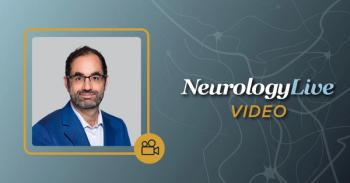
Post-Stroke Epilepsy: Risk Factors
Up to 45% of stroke victims over the age of 60 will develop epilepsy. Researchers at AES 2016 presented risk factors of post-stroke epilepsy.
After a stroke, more than 1 in 10 people develop epilepsy. Beate Diehl, UCL Institute of Neurology, London, United Kingdom, and colleagues examined the frequency of post- stroke epilepsy (PSE) in Predicting Language Outcome and Recovery after Stroke, a large imaging stroke research database with high-resolution MRI scans of stroke survivors.
Four hundred fifty patients with information on occurrence of seizures were identified. T1-weighted anatomical whole-brain scans were taken with a 3 T MRI scanner at a 1mm 3 voxel size. Lesion overlap maps identified patients with similar lesions at a given voxel.
PSE was seen in 11.4% (42 of 369) of patients with left hemispheric strokes. A similar incidence was seen in patients with right hemispheric strokes (11.1%, 9 of 81 patients). Both those with and without PSE were similar regarding gender, handedness, and stroke etiology. However, patients with PST were significantly younger than those without PSE (44±13 versus 56±13 years, P<0.0001). Also, PSE patients had significantly larger lesions (148±101cm3 versus 73±87, P<0.0001) and large lesions were more likely to damage deep white matter.
In patients with large left hemispheric stroke damage and PSE, the basal ganglia (globus pallidus and caudate nucleas) and most nuclei of the thalamus (anterior and ventral nuclei and posterior regions, including pulvinar) were the areas commonly affected. Both sites are important relay stations controlling movement and other functions, such as sensation and controlling consciousness.
“Many physicians treating stroke patients don’t realize that falls, episodes of confusion, and loss of consciousness may be signs of post-stroke epilepsy,” said Diehl. “Post-stroke epileptic seizures can negatively affect stoke recovery and rehabilitation.” Doctors treating stroke patients should be aware of these signs, given the frequency of PSE.
Take-Home Messages
• Physicians treating stroke patients should be aware of PSE, given that 1 in 10 stroke survivors develop epilepsy.
• PSE occurred in 42 of 369 (11%) patients with left hemispheric stroke.
• PSE occurred in 9 of 81 (11%) patients with right hemispheric stroke.
• Patients with PSE had significantly larger areas of brain damage than those without PSE and the large lesions were more likely to damage deep white matter.
• Patients who developed PSE tended to be younger (44 years versus 56 years) than those who did not.
Dielh B, et al. Risk Factors to Develop Post Stroke Epilepsy: Epidemiology and Lesion Mapping, Abstract No. 1.008, 2016, American Epilepsy Society Annual Meeting,
Newsletter
Keep your finger on the pulse of neurology—subscribe to NeurologyLive for expert interviews, new data, and breakthrough treatment updates.




























